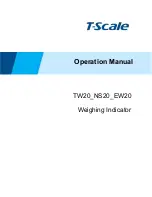
6
TEST METHODS SPECIFICATIONS
INTRODUCTION
The copper content of drinking water generally falls below 0.03 parts per
million, but copper levels as high as 1.0 part per million will give water a bitter
taste. Waters testing as high as 1.0 part per million copper have probably
been treated with a copper compound, like those used in the control of algae,
or have become contaminated from untreated industrial wastes. The addition
of copper sulfate to lakes causes an increase in the copper content of the
sediments. Acid waters and those high in free carbon dioxide may cause the
corrosion or “eating away” of copper, brass, and bronze pipes and fi ttings.
This corrosion results in the addition of copper into the water supply.
APPLICATION
Drinking, surface, and saline waters; domestic and industrial wastes.
RANGE
0.0 to 6.0 ppm Copper
METHOD
Cupric ions form a yellow colored chelate with diethyldithiocarbamate around
pH 9-10 in proportion to the concentration of copper in the sample.
HANDLING & PRESERVATION
Copper has a tendency to be absorbed to the surface of the sample container.
Samples should be analyzed as soon as possible after collection. If storage is
necessary, 0.5 mL of 20% hydrochloric acid per 100 mL of sample will prevent
“plating out.” However, a correction must be made to bring the reaction into
the optimum pH range.
INTERFERENCES
Bismuth, cobalt, mercurous, nickel and silver ions and chlorine (6 ppm or
greater) interfere and must be absent.
www.
GlobalTestSupply
.com
Find Quality Products Online at:






































